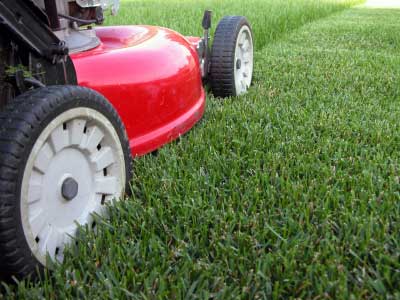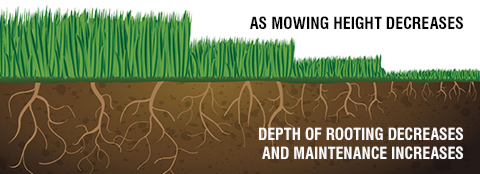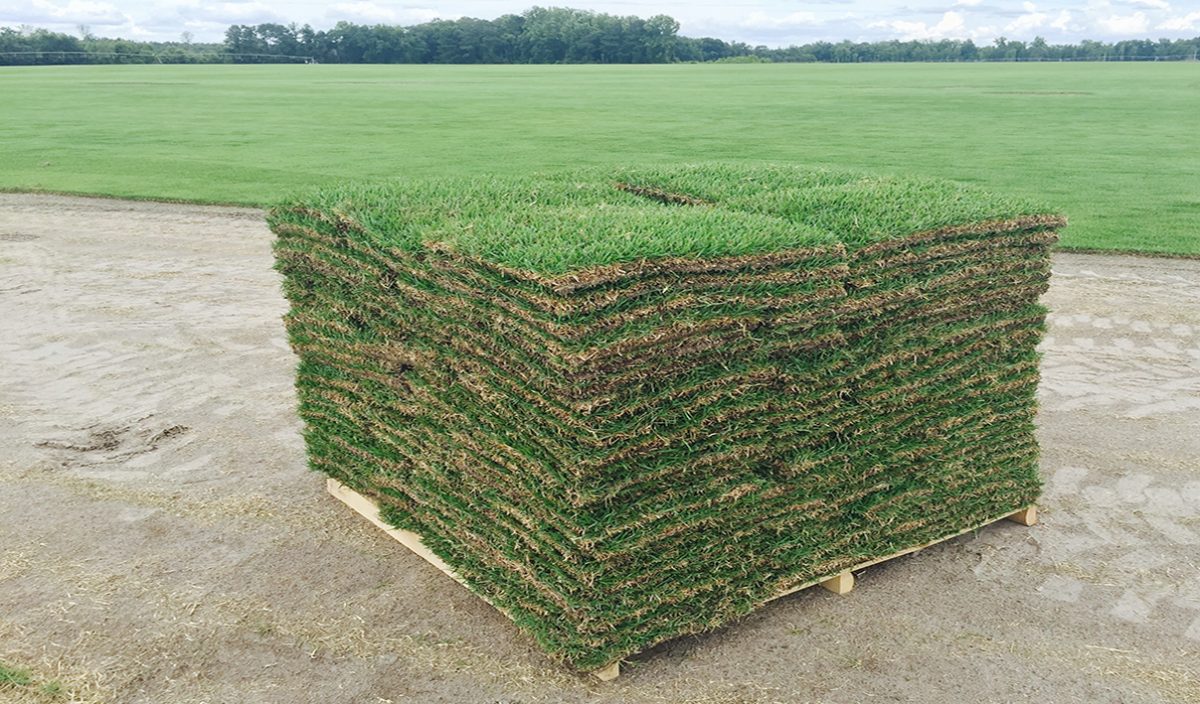
LAWN MOWING GUIDE
Regularly mowing your lawn promotes vertical growth and lateral density; it also provides the manicured look you desire. However, not all grass types are mowed at the same height, so you need to know your lawn type and what it requires.
MOWING HEIGHT
Many people choose to pick a lawn height and mow their lawns at this same height year-round. However, a better option is to vary heights at different times of the year.
The idea behind altering your mowing heights is to start and finish the mowing season with shorter grass, but to let it grow a bit taller during the hottest times of the year (June–August). This is to promote root growth, keep more moisture in the grass, and aid in times of drought conditions.
Check out the table below for more details as to what heights work best with differing grass varieties.
Mowing Height Ranges by Grass Type

St. Augustine Between 2″–4″
Zoysia (fine) Between 0.5″–1.5″
Zoysia (coarse) Between 1″–2″
Bermudagrass Between 1″–2″
Centipedegrass Between 1.5″–2″
Bluegrass Between 1.5″–2.25″
Tall Fescue Between 3″–4″
MOWING FREQUENCY AND CONSISTENCY
Because most of us are weekend warriors, we tend to mow our lawns either weekly or every other week. Whatever you choose, try to remain consistent.
If you are not able to periodically maintain this schedule (rain, vacation, broken lawn mower, etc.), and your lawn gets really tall, you will want to avoid removing more than 1/3 of the leaf blade in one mowing.
This will stress your lawn and make it go brown for a short time. Instead, you will want to mow multiple times (wait about three to five days between mowing) to get the grass back down to the desired height.
MULCHING
If you have a mulching lawnmower, you should make use of it. Mulching provides free organic material for your lawn and saves you the hassle of bagging. However, mulching may require weekly mowing.
Because grass grows more in late spring and summer, you will be removing more cuttings at this time of year. A weekly mowing and mulching schedule will allow the cutting to be incorporated into your lawn seamlessly.
Mulching every other week in the late spring and summer may result in excess cuttings sitting on top of your lawn, which can be unsightly.
